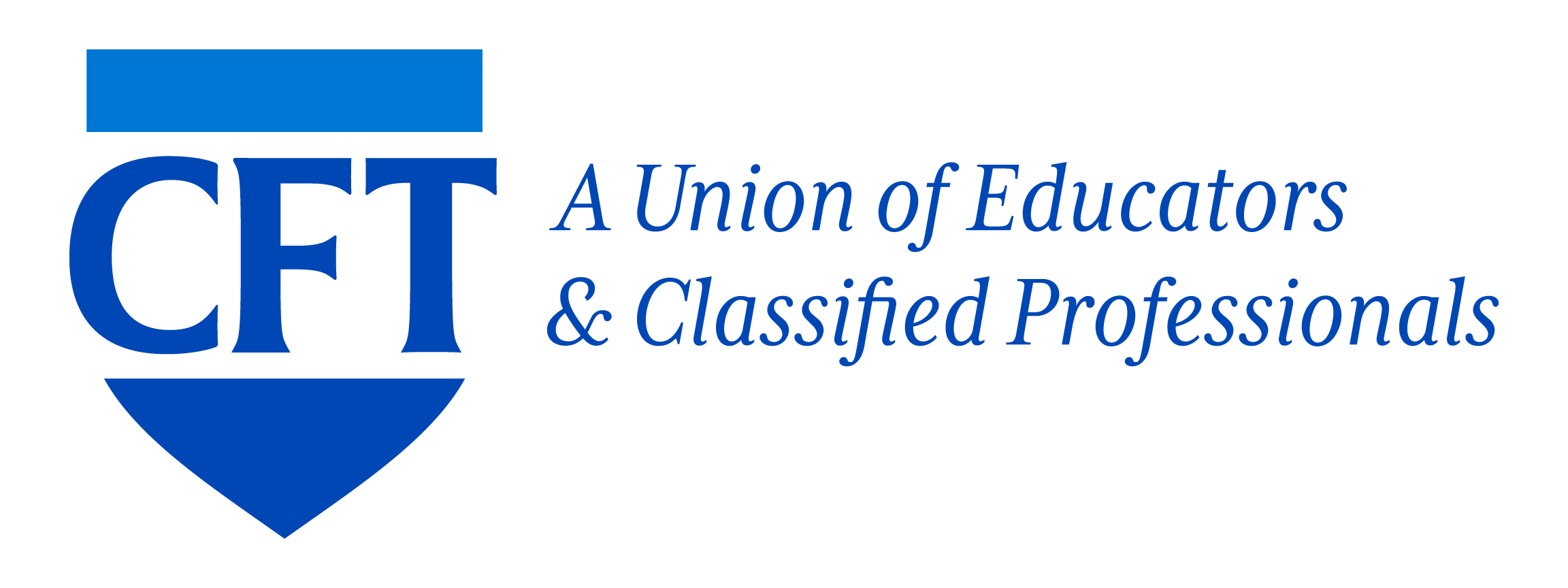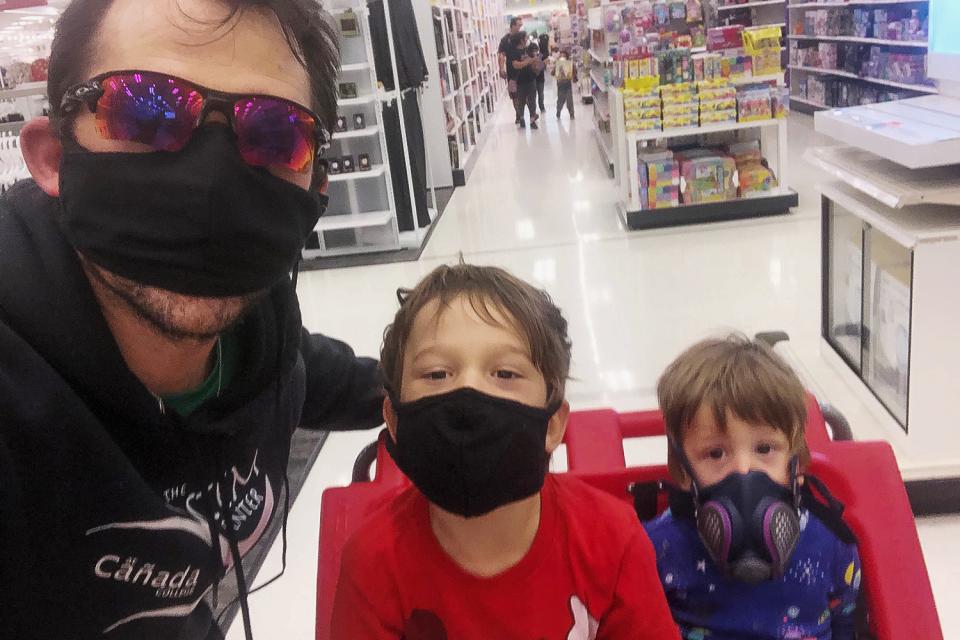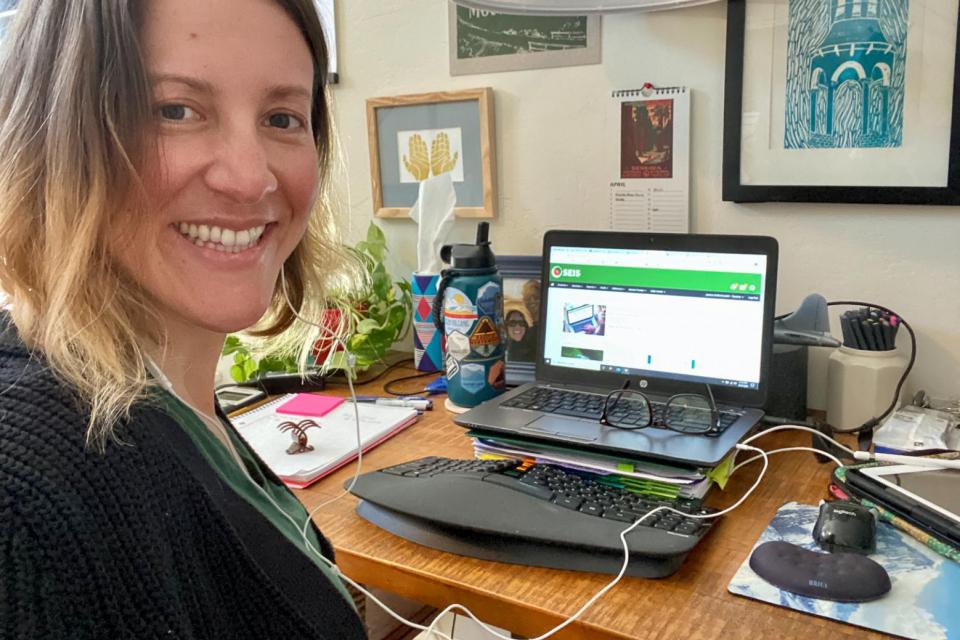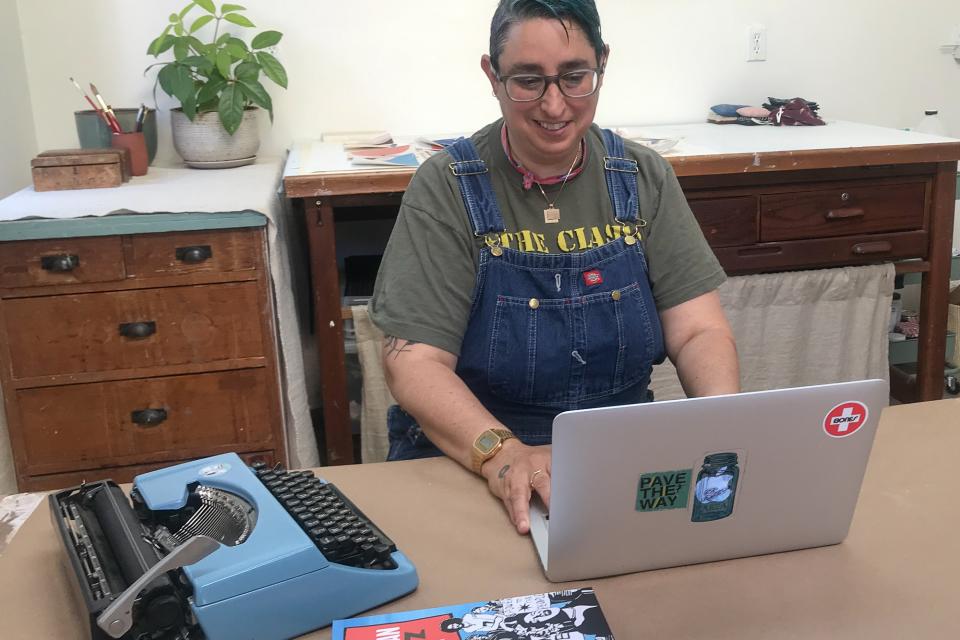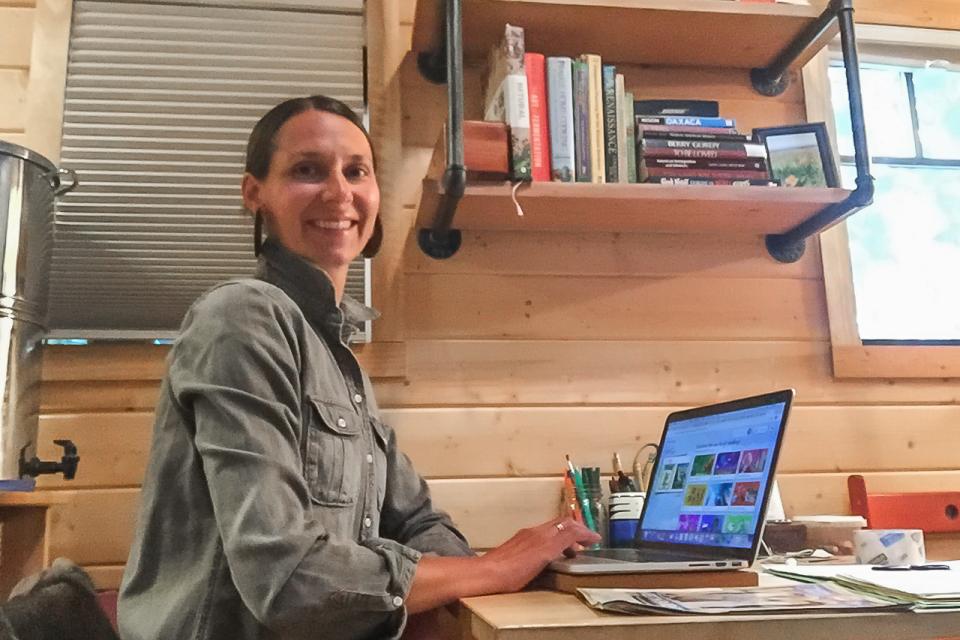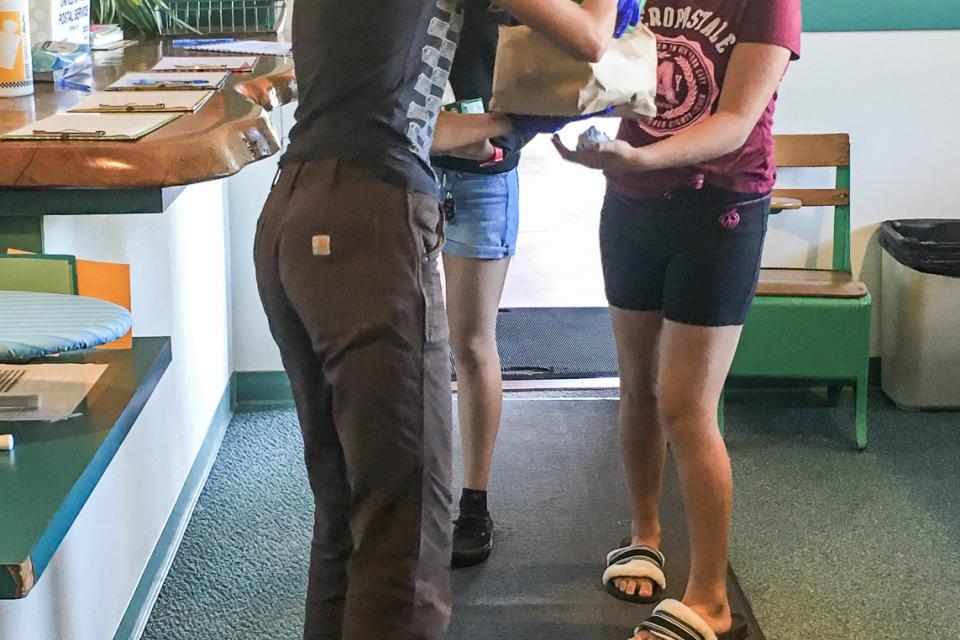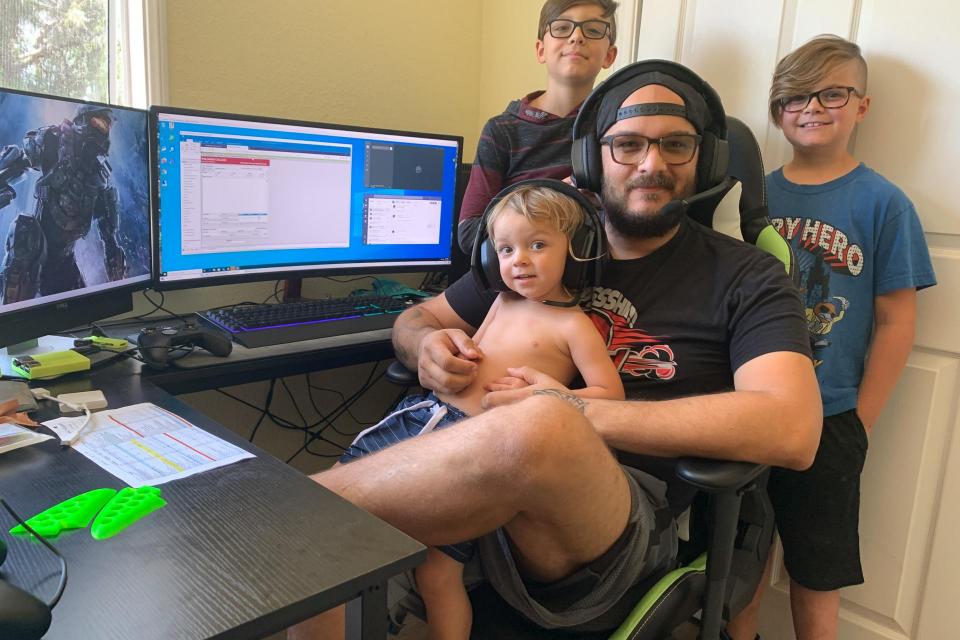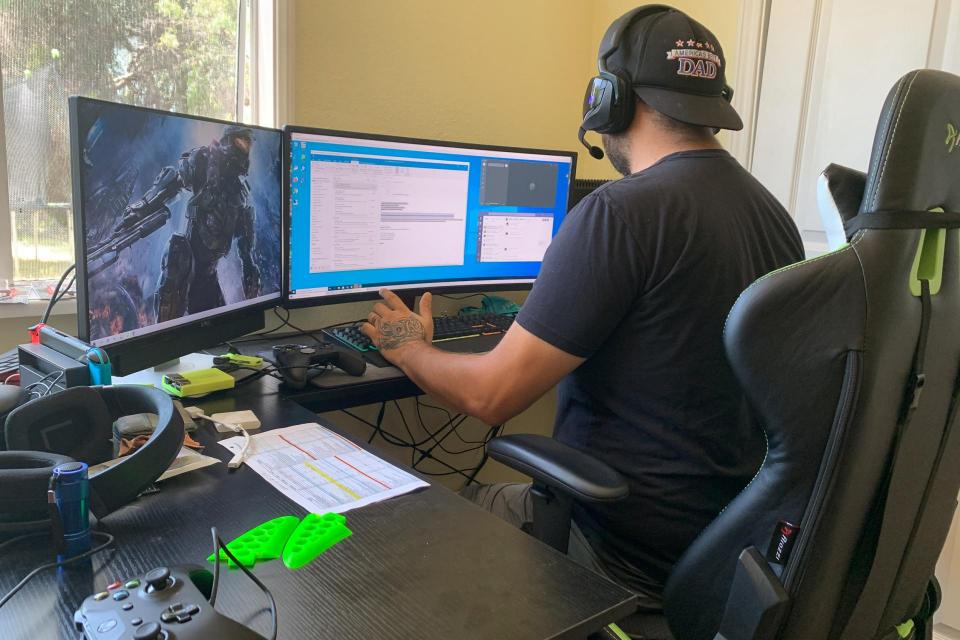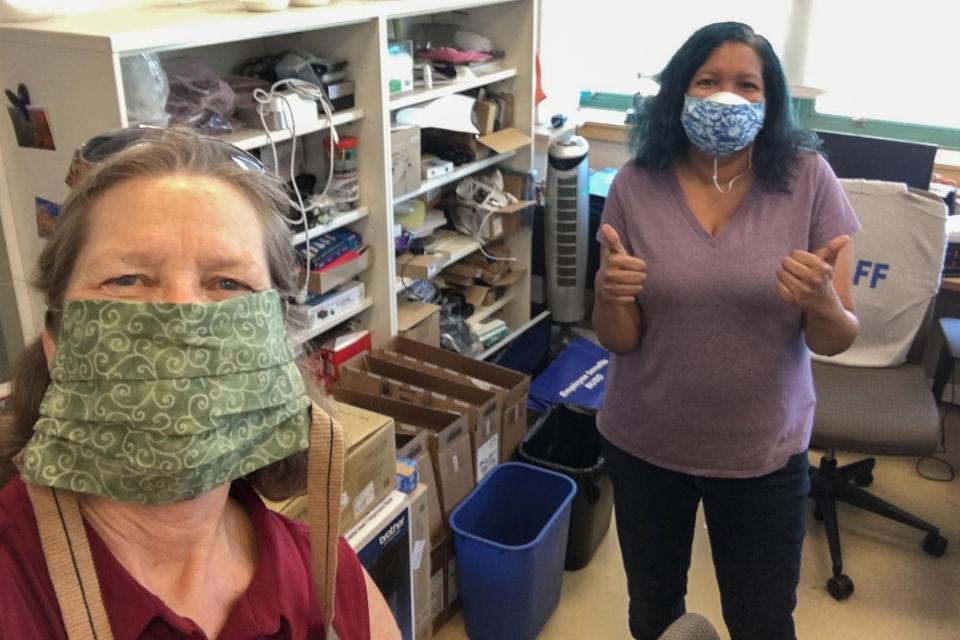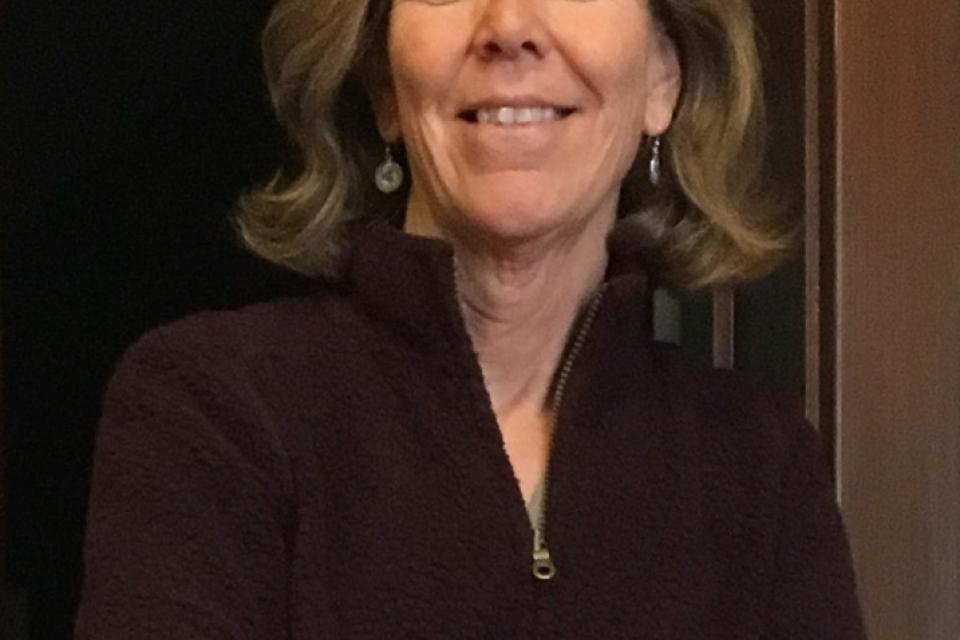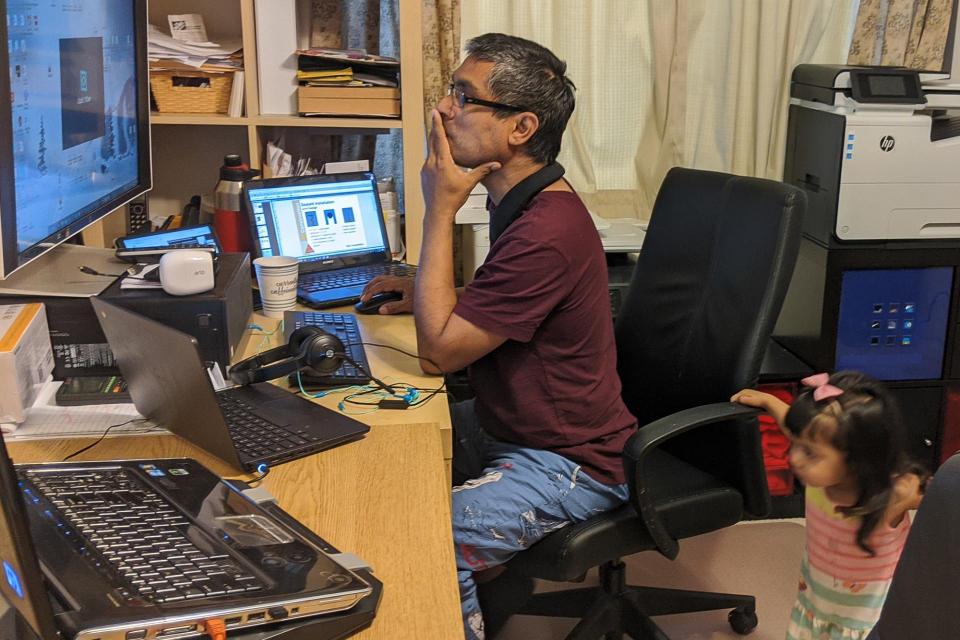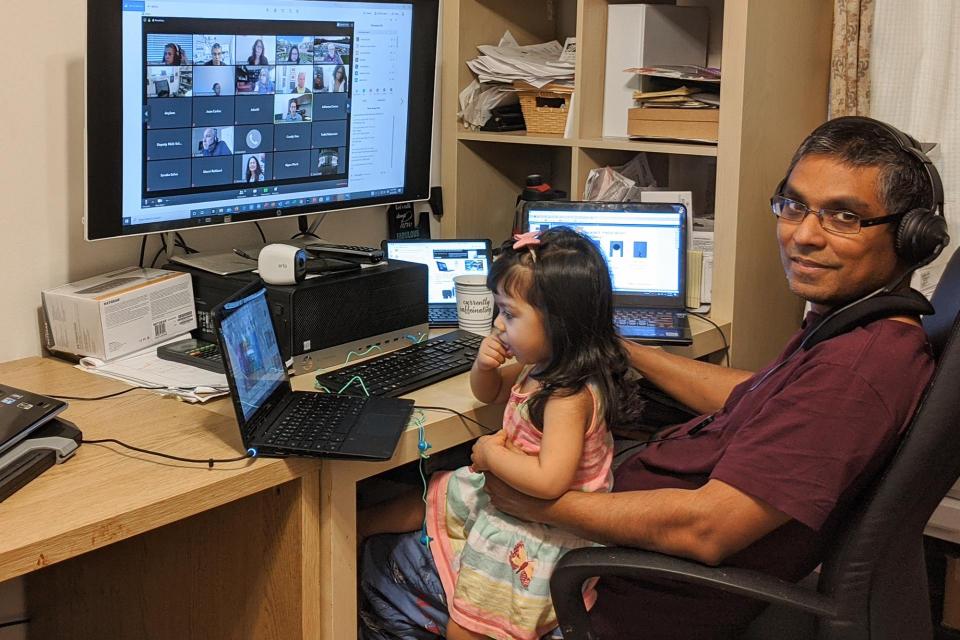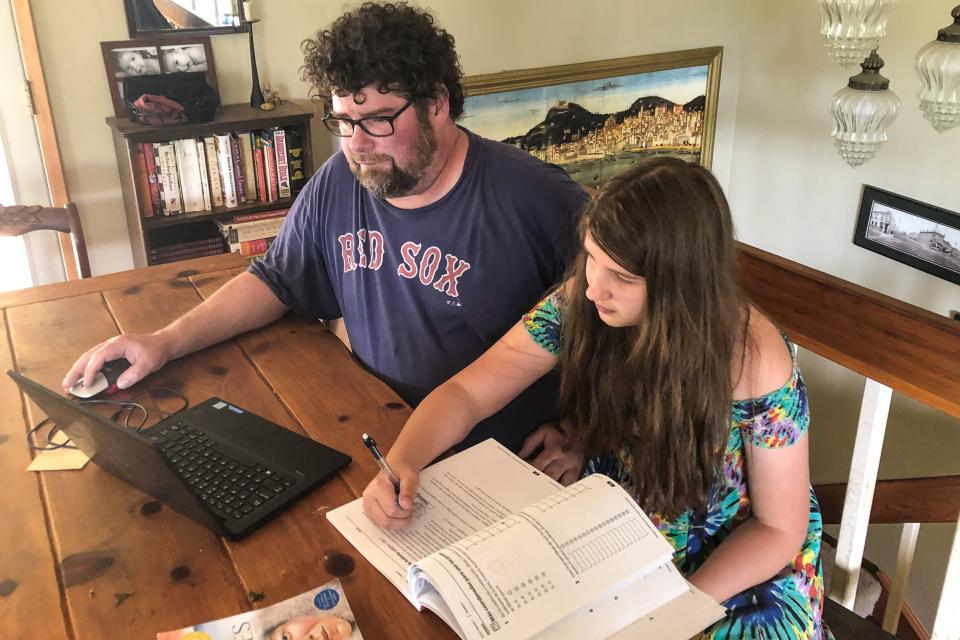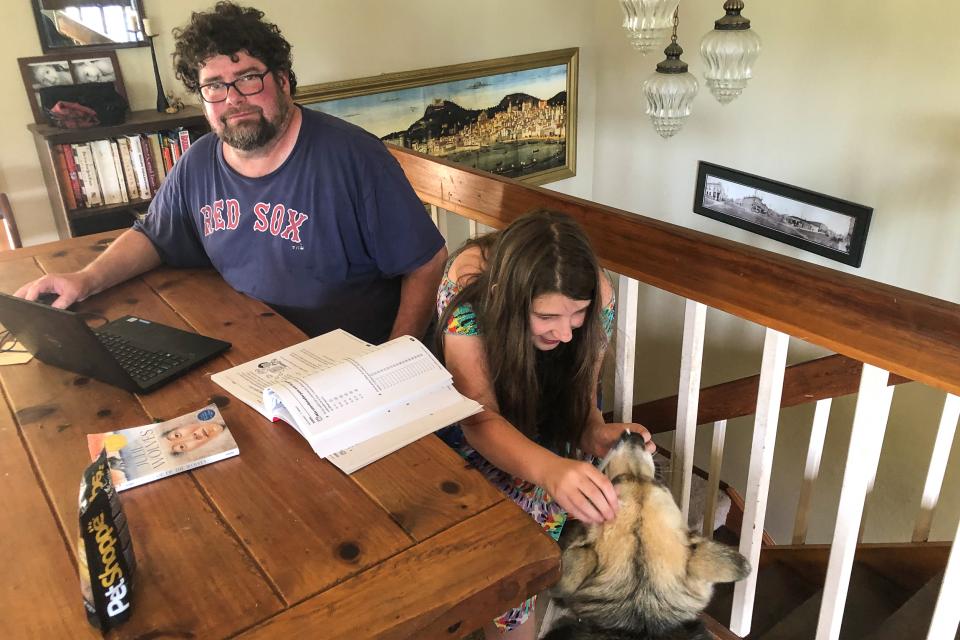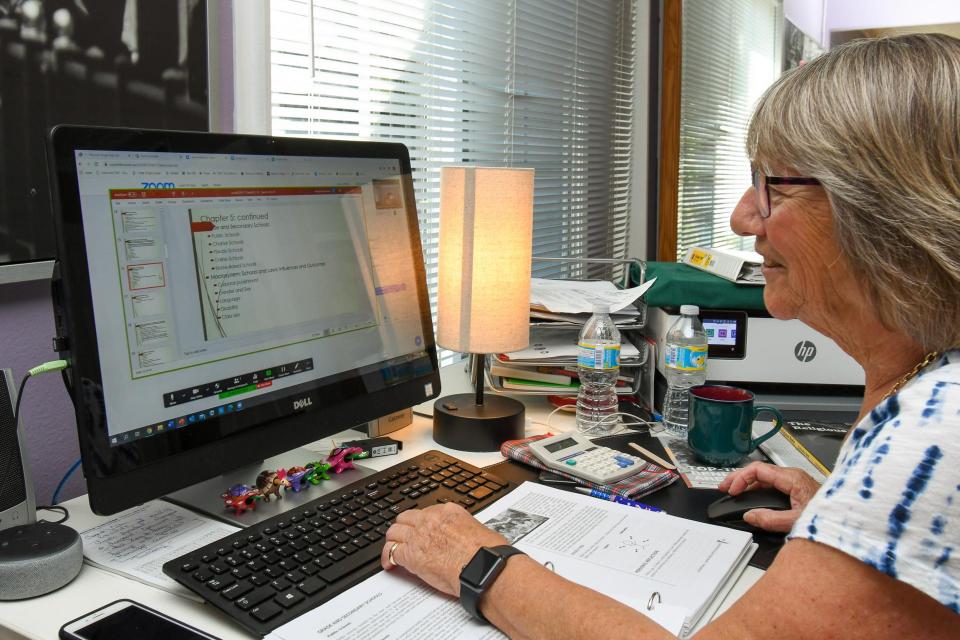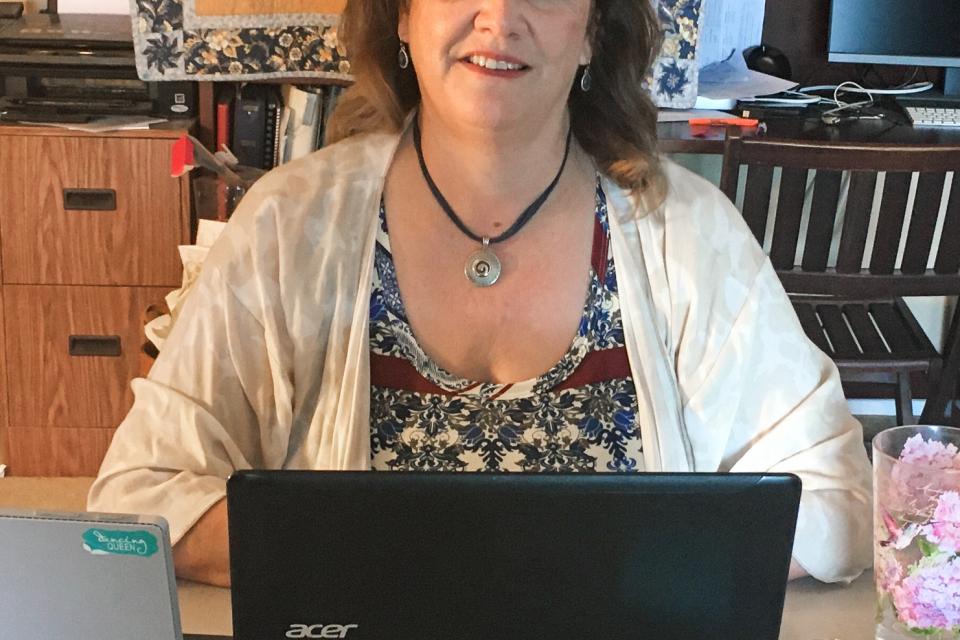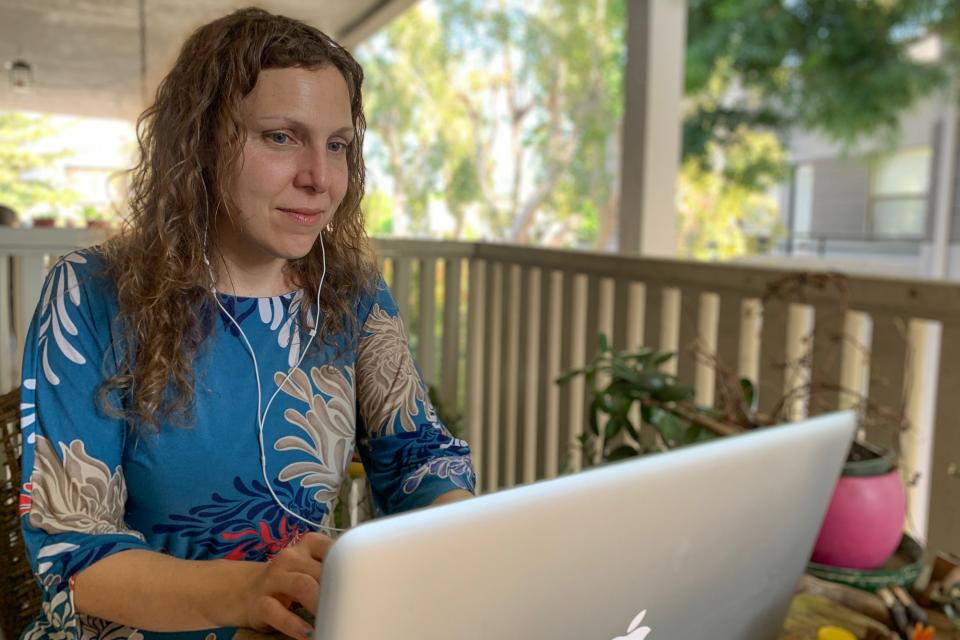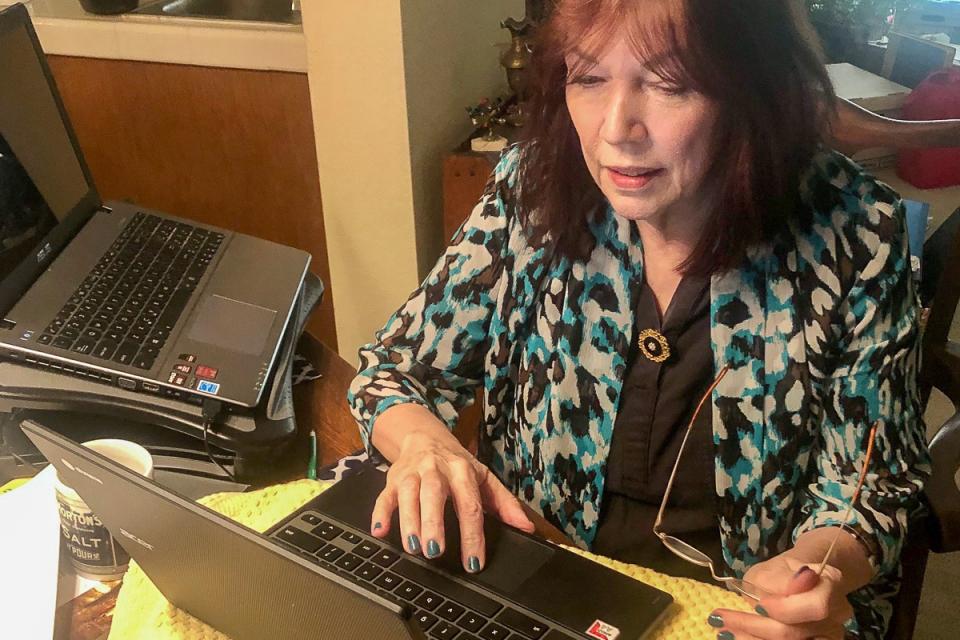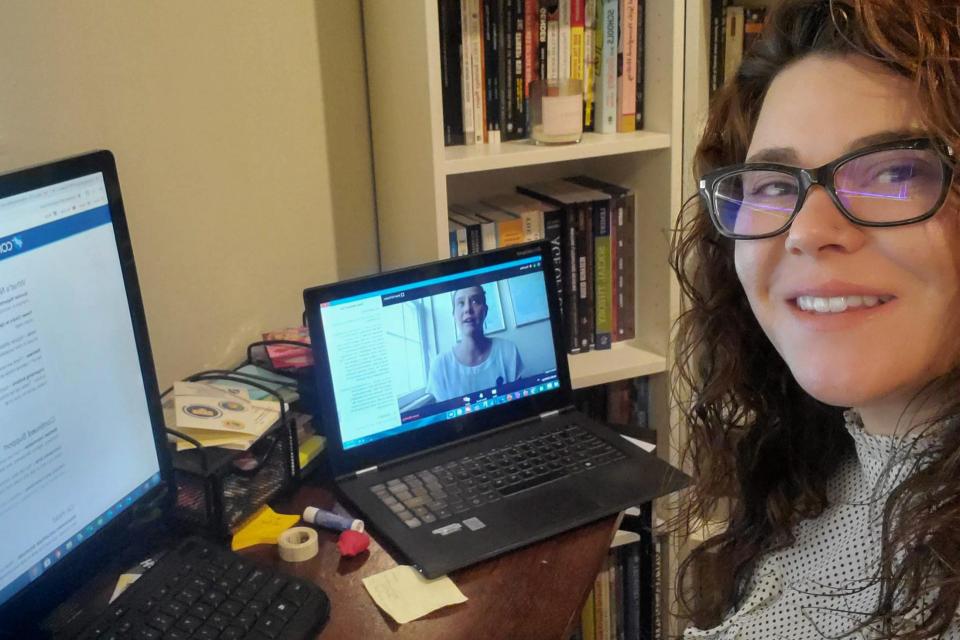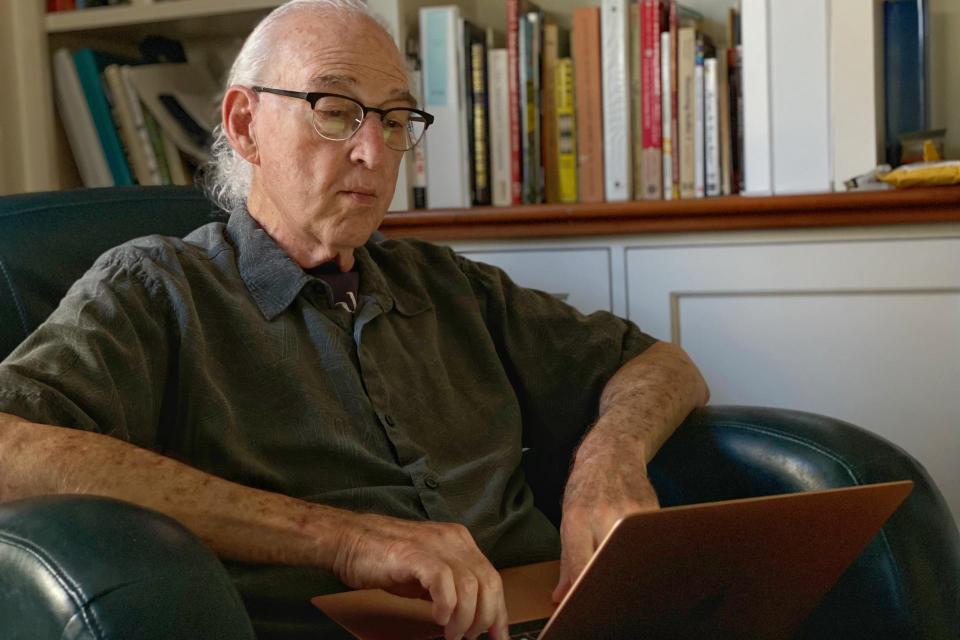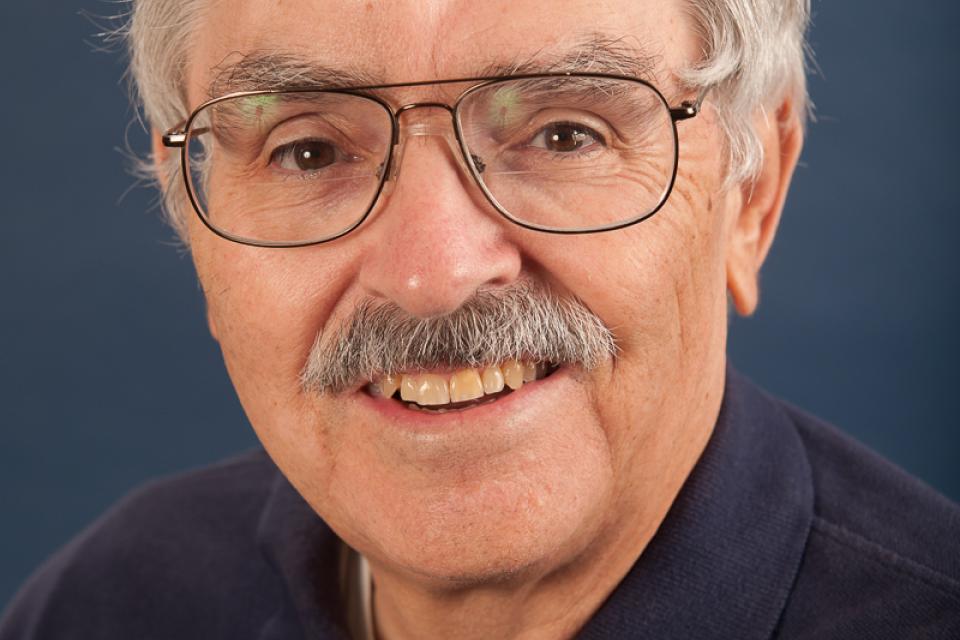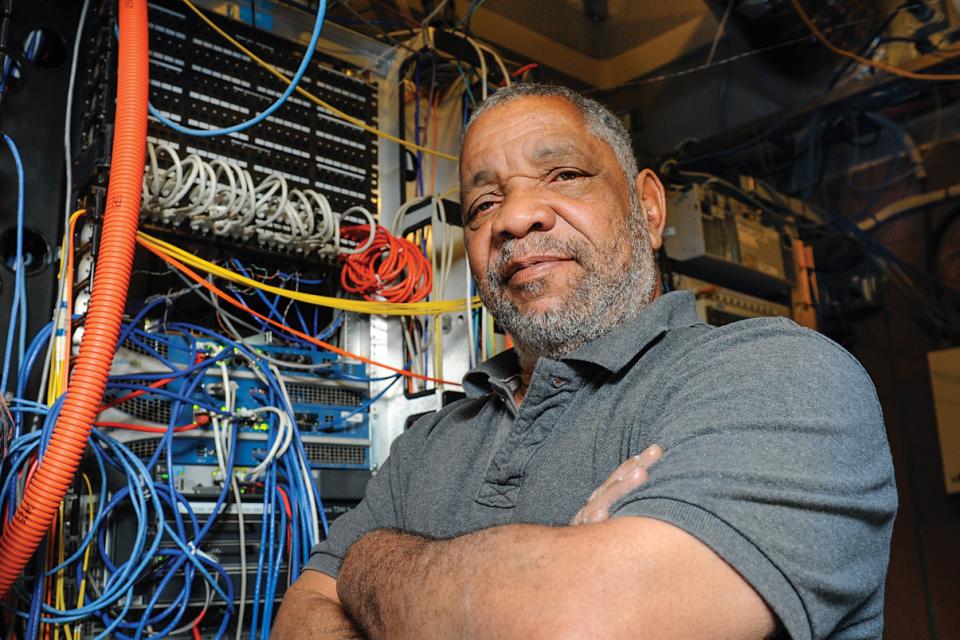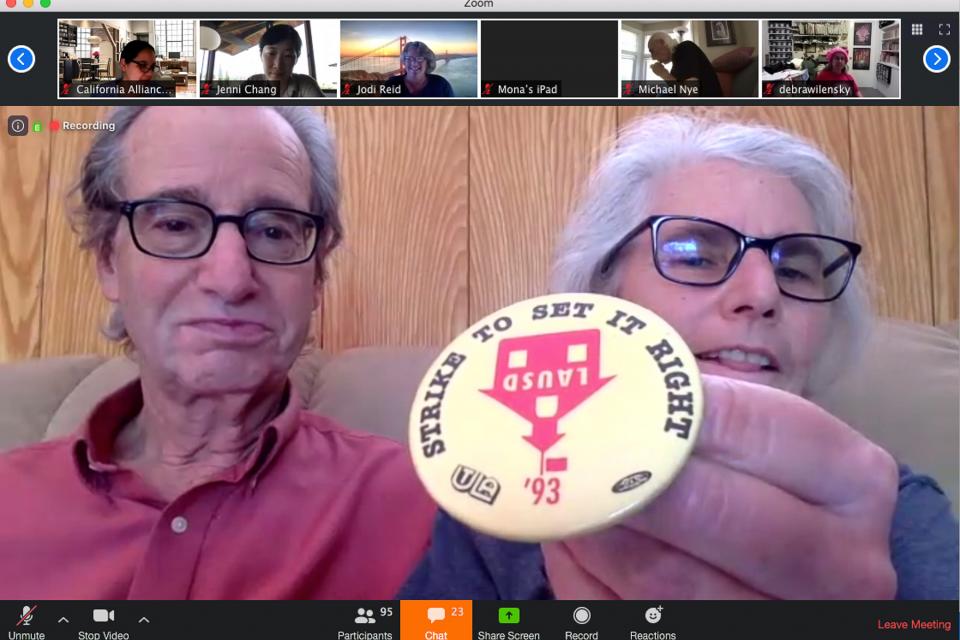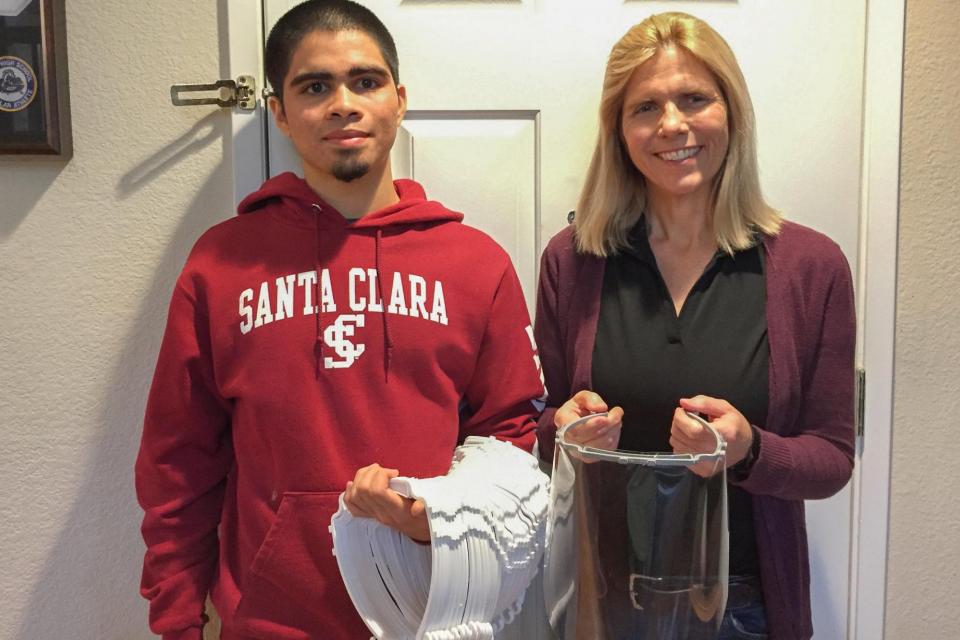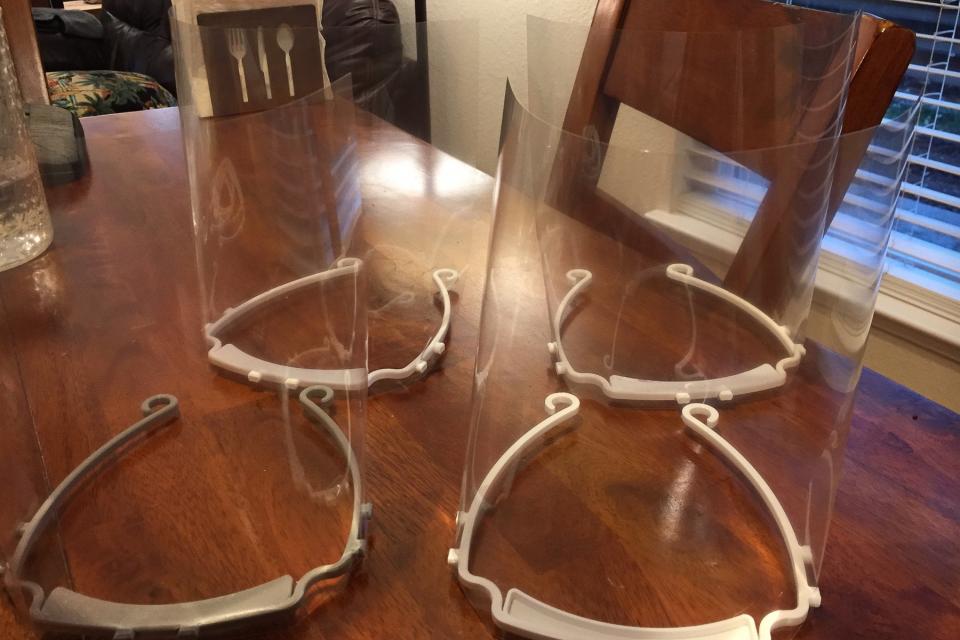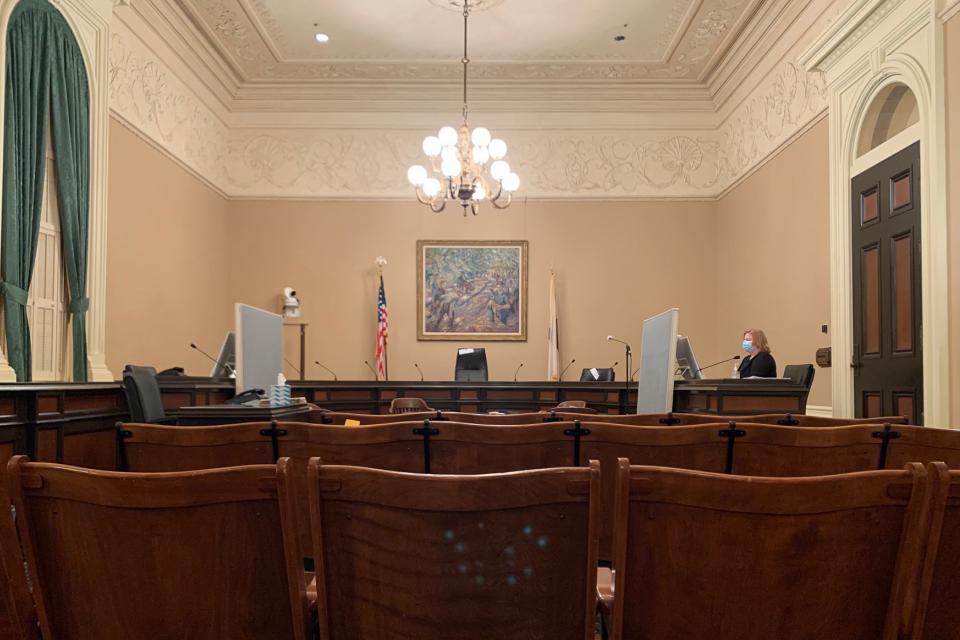Newsroom
Social worker’s outreach during pandemic leads to district-wide change
“We’re not just trying to teach — we’re in the in business of love and care…”
Leslie Hu, a social worker at San Francisco’s Martin Luther King Jr. Middle School, thinks that during a global pandemic, when many students are seeing their communities directly affected, isn’t the time for business as usual.
Tightrope Walkers: Teaching and parenting at the same time
Faculty parents share stories of teaching from home during shelter-in-place
By Katharine Harer, San Mateo Community College Federation of Teachers, AFT Local 1493
You’re teaching all your classes online, providing support to freaked-out students and dealing with a flood of emails every day, while at the same time, and often in the same room, hour after hour, your children need you to be present and available. You can’t send them to school or childcare or to the grandparents or to play at their friends’ houses. You can’t send them anywhere. Will lack of sleep, personal space and time make you trip and fall, and if so, who will catch you?
College students staying positive through the pandemic
Union presidents surveys students for newspaper column
By Mark James Miller, Part-Time Faculty Association of Allan Hancock College
The COVID-19 pandemic has brought its own unique challenges to every facet of society. Everyone has been seriously impacted by the virus, and students in higher education are no exception.
Nationwide, students are delaying their education until the pandemic is over and colleges return to the traditional classroom approach instead of the online model being used in its place. Some are simply uncomfortable with online learning, and others are fearful that the education they receive remotely is not of the same quality as what they get in the classroom with the instructor present.
Now – yes, now – is the time for contingent faculty to organize
If we don’t fight now, we may not get another chance
By Josh Brahinsky and Roxi Power, UC-AFT Santa Cruz
When graduate-student workers at the University of California at Santa Cruz voted overwhelmingly in December to reject their statewide union contract and follow the West Virginia teachers’ model of a wildcat strike, the precarious lives of academic workers became a news story once again.
The task of reopening brings challenge and hope
By Jeffery M. Freitas, CFT President
In my communications with CFT members about school closures and sheltering in place during the past two months, I have often signed off, “Stay safe and take care.” For me, that is more than a convenient turn of phrase.
As we enter into the third month of the COVID-19 pandemic, we are in the midst of a crisis unlike anything most of us have experienced in our lifetimes, and when this story is retold years from now, I have no doubt it will be recorded as a turning point in history. I know most of you are, like me, tired, stressed, and worried.
Dedication to students helps teachers make huge shift online with grace, diligence
Distance learning demands hard work, extra hours — and good internet
Since schools closed due to the COVID-19 pandemic, and instruction moved online, Jessica Hoffschneider, a resource special education teacher at Soquel High, has been busy. A site representative for the Greater Santa Cruz Federation of Teachers, she spends her days trying her best to help her students with mild to moderate disabilities.
Tech support powers online classrooms behind the scenes
Classified employees make the connections and keep them strong
Computer geeks have been on the front lines of online learning since March, when school and college districts across urban and rural California closed to avoid the COVID-19 pandemic. Tech staff are the essential employees who are turning digital classrooms from a pipedream into a working educational system.
College instructors rise to distance learning challenge
Extra hours, perseverance, union support assist in transition
Palomar College child development teacher Barbara Hammons definitely found the idea of distance teaching a challenge. For years, she and her department chair had a running joke – if she ever wanted to get rid of her, no need to fire her, just give her an online class.
Retired unionists go digital during the pandemic
Seniors getting comfortable online and learning new organizing tricks
It is 12 noon on Friday and the California Alliance of Retired Americans is ready to Zoom. Scores of CARA members from San Diego to San Francisco are gathered around home computers, ready for the next best thing to an in-person meeting.
Tips for seniors during the COVID-19 pandemic
How one retiree chapter is supporting seniors during stay at home
By Susan Morgan, President, AFT Local 1931 Retiree Chapter
As a retiree chapter, one of our current challenges is to find new ways to stay connected, be supportive, and sustain our esprit de corps. The current pandemic has increased challenges for retirees, many of whom were already dealing with the social challenges of isolation and loneliness. These newly heightened mental health concerns are real, and our task is to find meaningful ways to connect with our members to support our common union values and goals.
Paraeducator steps up, makes face shields for medical workers
Gilroy family applies 3-D printing skills from campus STEAM lab
By Arti O’Connor, President, Gilroy Federation of Paraeducators
Diana Torres, a paraeducator in the Gilroy Unified School District, has been instrumental in establishing the STEAM lab and program at Las Animas Elementary School. I met her several months ago and was extremely impressed when she showed me the lab — with a 3-D printer — that she uses to teach students about that form of technology.
Uncertainty surrounds education budget for coming year
The one known — coronavirus has blown a giant hole in the state budget
The governor and the Legislature know the COVID-19 pandemic has blown a huge hole in the state budget, but they can’t easily project state revenues or the impact on Proposition 98 — the mechanism that provides K-12 schools and community colleges about 40 percent of the state’s General Fund.
